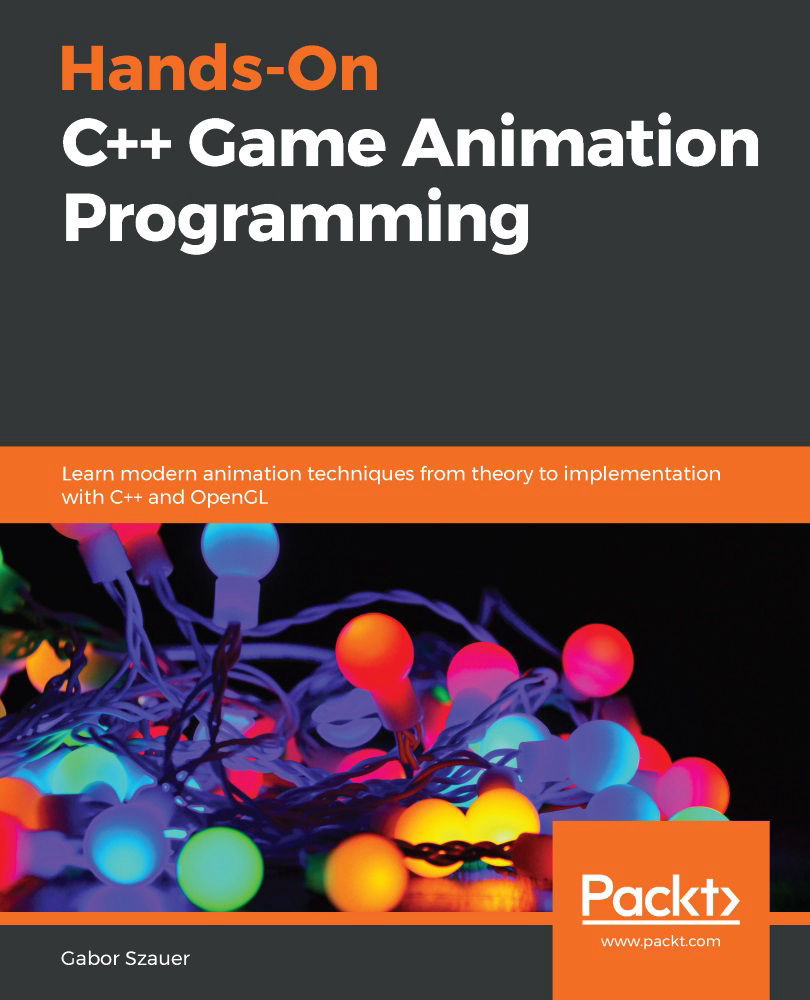Chapter 6: Building an Abstract Renderer
This book focuses on animation, not rendering. However, rendering an animated model is important. In order to avoid getting caught up in any specific graphics APIs, in this chapter, you will build an abstraction layer on top of OpenGL. This will be a thin abstraction layer, but it will let you work on your animation in later chapters without having to do anything OpenGL-specific.
The abstract renderer you will implement in this chapter is very lightweight. It doesn't have a lot of features, only the ones you need to display animated models. This should make porting the renderer to other APIs straightforward.
By the end of this chapter, you should be able to render some debug geometry to the window using the abstract rendering code you will create. On a higher level, you will learn the following:
- How to create shaders
- How to store mesh data in buffers
- How to bind those buffers as shader attributes
- How to send uniform...






































































